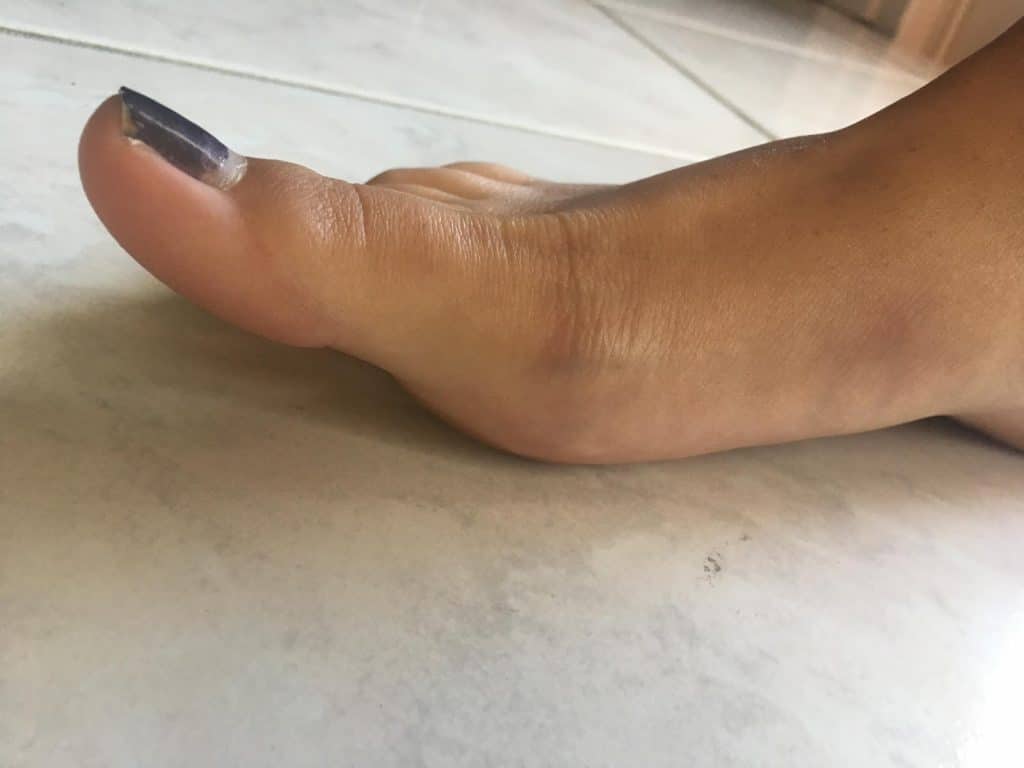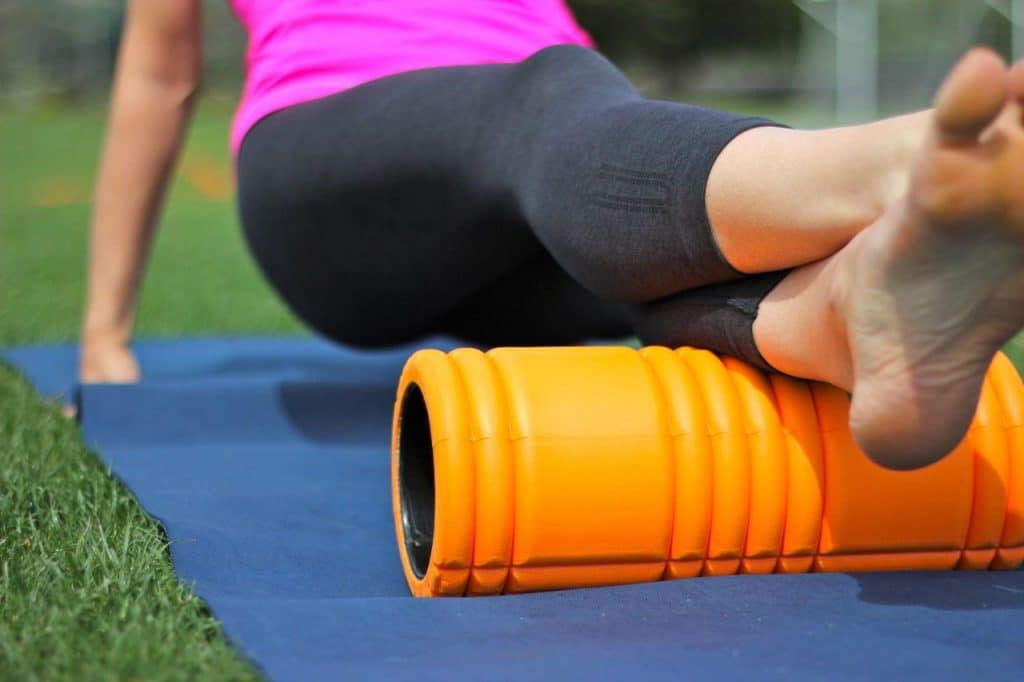Last week we discussed the connection between the Pinky Toe and Shoulder pain through the Spinal (Fascial) Line. This week, we are going to take this subject a step further and discuss the results from our toe tests, how these toe tests can possibly detect shoulder pain, and lastly, how we can alleviate shoulder pain through myofascial release!
Let’s get started…
If you read Part I, you tried the two tests posed at the beginning of that post. If you haven’t preformed those two tests, [CLICK HERE] to read Part I. Otherwise, let’s discuss the results:
- You should have found it was significantly harder to perform the two tests on one foot versus the other.

- Also, it is harder to perform Test #2 (lifting your big toe, while pushing the other four into the ground) versus Test #1.

What does this mean?
Think about the shoulder that gives you the MOST pain and then, think about the foot that it was harder to perform this test on: it should be opposites (i.e. right shoulder-left foot & left shoulder-right foot).
Remember: it’s the spinal line that connects these two opposing entities—as it crosses over to the opposing side (around your midline) as you ascend through the body. See the picture below.

As you trace the spinal line up the leg through your mid-region, you will see the line crosses from the front of the shoulder to back behind your shoulder blade then up the base of the neck—to your scalp.
This pathway of the spinal line is what allows your body to have pain in one area that may be produced in another.
How does this affect me?
Just like we said last week, your shoulder pain could be produced in another area—beside the joint itself and/or could be making your shoulder compensate for lack of mobility, previous injury, or inflammation in another area.

Since the spinal line encompasses many different muscle groups—if one part of that line is out of whack, the entire line itself is affected. Kind of like cooking. Every ingredient in the recipe is necessary for the outcome—if one is missing, replaced, or you don’t have enough of—the final product isn’t the same (or as good ).
What can I do to figure out if my shoulder pain is coming from another area?
Two words: Myofascial Release.
Myofascial Release is a very safe and effective hands-on technique that involves applying gentle and continuous pressure to the myofascial connective tissue to help eliminate restrictions, lower pain, and restore motion. Myofascial release is essentially a way of actively stretching the muscle through a small amount of pressure.
We have talked about using myofascial release to improve your ankle flexibility and overall kicking speed–but here is your new test: now that you know how to trace your spinal line (from head to toe), start by foam rolling all the areas between your hurt shoulder and your opposing foot (including, the side of your neck—a tennis ball may be better with the smaller area here) for 1-2 minutes each and note if you find any restrictions or spots that give you a good amount of pain. Also, write down if these areas are different than the shoulder joint itself.

Continue this routine for 2 weeks (focusing heavily on the areas giving you pain) and then–YOU tell me if you see a reduction in shoulder pain!
Quick Tip: avoid foam rolling on your stomach and abdominal region. Let’s keep those internal organs safe!
What our bodies can do to cover up or “blame” pain on another area is simply amazing. You may have had a lower leg surgery that somehow is now affecting your upper body’s mobility—don’t overlook anything. During these next two weeks, become your own physical therapist and scan your body. It will beAMAZING what you find!
[CLICK HERE] to read Part III—our final segment on the spinal line and shoulder pain via our Big Toes!
Until Next Week,
Abbie Fish

One Response